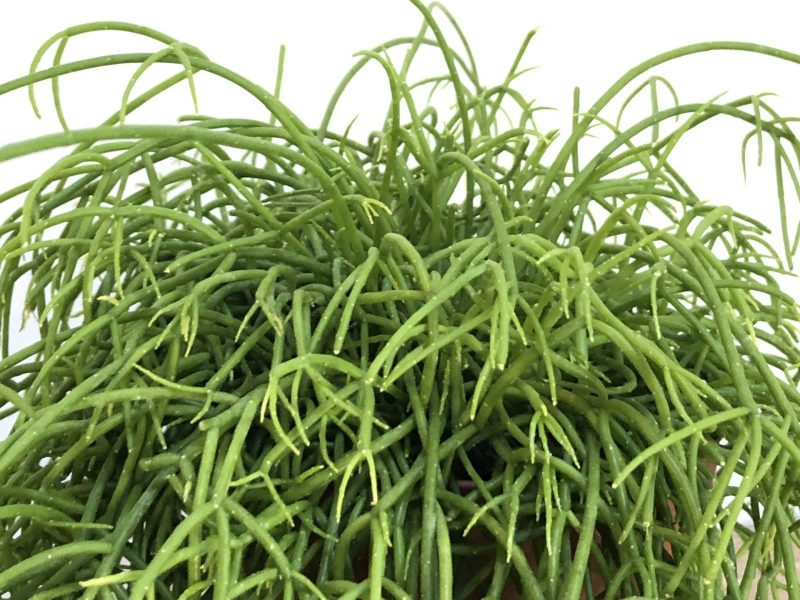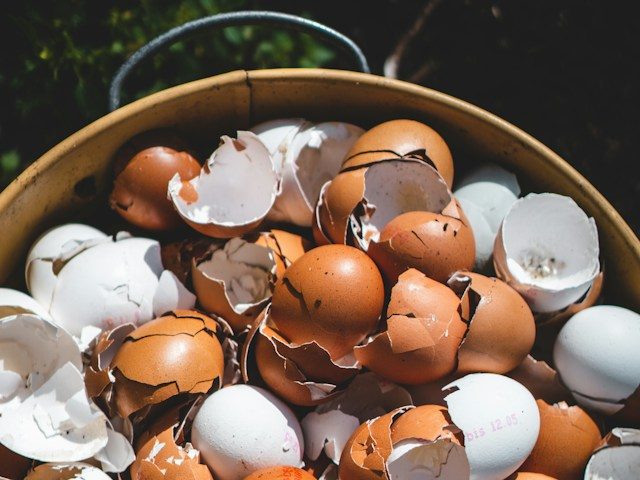
The Rhipsalis, or Mistletoe Cactus as it’s otherwise known, is actually a jungle cactus which makes its care slightly different to what you would expect with Cacti. They need warmth and humidity to really thrive and plant parents who don’t know this might find themselves with a whole load of brown leaves. Don’t worry though, brown leaves don’t mean that your plant will die immediately, and with the right methods, you should be able to get your plant back to full health.
In this post, we will be going over the different causes of brown leaves in Mistletoe Cactus plants to make sure that you diagnose the issue properly, take the right steps to solve that problem and are armed with tips to stop it from happening again.
Too much water can lead to brown leaves for Mistletoe Cacti
If the leaves closest to the base of the plant are turning brown and the whole plant looks as though it’s drooping just a little more than normal, then it might be overwatering that is causing these issues on your Mistletoe Cactus.
Overwatering is one of the main killers of Mistletoe Cacti as the problem can spread pretty rapidly so you need to make sure that you are catching this problem in the early stages. Too much water will lead to the potting mix being super waterlogged, which rots the roots and prevents your Mistletoe Cactus from getting the nutrients it needs. This is what turns the leaves brown as your plant just can’t sustain those leaves anymore.
If you think that your Mistletoe Cacti’s potting mix is waterlogged, check the moisture of the soil immediately and inspect the root system. If the roots are very soft and are almost black in colour, then this means they have started to rot. Switch out the potting mix if it is still waterlogged as this means your Mistletoe Cactus can begin the recovery process immediately and cut off all rotten parts of the root system.
Moving forward, make sure to check the moisture levels in the soil each time you water your plant. Using a moisture meter or the chopstick test can help you avoid overwatering your Mistletoe Cactus and avoid more brown leaves forming.
Brown leaves may also be caused by underwatering
If the leaves on your Mistletoe Cactus have turned quite light brown in colour, and are dry and crispy to touch, then it might be a lack of water that is causing the issue. Mistletoe Cacti are jungle cacti which mean they like to have more moisture than your average cactus.
Again, just like with overwatering above, the best way to properly diagnose the problem is to take your plant out of its pot and inspect the moisture levels and the potting mix. If the root system is dry and shrivelled then you are most likely not giving it enough water.
Your first instinct might be to give it loads of water straight away but this can actually be harmful to your Mistletoe Cactus if the soil goes from one extreme to the other. Instead, you want to reintroduce frequent watering for a week or two and this should solve the problem.\
If you just can’t get on the right watering schedule it could be worth investing in a good quality self watering plant pot, these take all of the trouble out of the process and will make sure that your Mistletoe Cactus isn’t resting in stagnant water – eliminating the risk of root rot or other watering based issues.
Drainage issues can also lead to brown leaves
If there seems to be a lot of moisture in the pot of your Mistletoe Cactus, but you aren’t watering it very often, and not giving it loads of water each time, then it may not be your watering habits that are causing the brown leaves, but a lack of drainage.
It’s crucial that any excess water is able to drain from the pot so that it doesn’t cause waterlogged soil. You can very easily increase the amount of drainage in the pot by mixing in a small amount of perlite, this will make it far easier for water to flow through and out of the drainage holes of your pots (you should also check to make sure your pots have drainage holes).
We also recommend investing in terracotta pots as these allow some of the excess water to evaporate out of the sides of the pot. You will usually buy your houseplants in plastic pots as they are great for nurseries (cheap, light and unbreakable). However, plastic pots aren’t great for your plants as they lock in every single drop of moisture. So sometimes it is worth investing a little more to make sure that the roots of your Mistletoe Cactus are not sitting in too much moisture.
Brown Mistletoe Cactus leaves can be caused by dry air
Humidity is often forgotten when it comes to caring for your plants as it’s not as obvious as light and water. However, it can be a common reason why Mistletoe Cacto develop brown leaves as they are native to the jungle and therefore love a higher humidity level.
Whilst we can’t replicate the jungle environment in our homes, there are a few really easy ways to life the humidity for your Mistletoe Cactus:
Mist the entire plant
One of the easiest methods for increasing humidity is misting using a spray bottle. It’s a great habit to get into for all of your humidity houseplants. Your Mistletoe Cactus will love a daily misting, or at least a few times a week if you don’t have that much time.
Use a pebble tray
This one requires a little bit more set up but is definitely worth it! Fill a tray with small stones and fill it two-thirds of the way up with fresh water. Then place your Mistletoe Cactus on top and the water will evaporate around it over the course of the day. One thing you must be careful of is that the roots and the pot are not touching the water in the tray as this will cause waterlogged soil and probably root rot.
Give your Mistletoe Cactus a shower
Another way to instantly raise the humidity for your Mistletoe Cactus and avoid more brown leaves is to give it a wash down. Just pop your plant in the shower or sink and give the leaves and potting mix a good soaking. You want to keep the water lukewarm so you don’t shock or damage the leaves and we also recommend keeping the water pressure fairly low so you don’t accidentally damage the plant.
Buy a humidifier
These are a real game-changer when it comes to increasing the humidity for your Mistletoe Cactus (and other plants) and avoiding brown leaves. They are portable and affordable devices that keep a consistent humidity level in your home.
We recommend this humidifier from Amazon. We’ve been using it for several years and our plants really love it!
Watch out for over-fertilisation as this can cause brown spots
Most generic plant foods and fertilisers will recommend a dosage for your plants, but it’s often far too much for a Mistletoe Cactus and can result in brown leaves. There are a lot of factors that impact how much fertiliser your plant needs, from age, maturity, size and environment to name a few. This makes every plant unique in terms of fertilising so there can never be a one-fits-all amount!
We recommend diluting the fertiliser more than the recommended amount as well as spacing out how often you fertilise to suit each of your plant’s needs. Also remember that you don’t need to fertilise your plant at all if you choose not to, you’ll still get plenty of healthy growth without it.
Those are the four most common reasons why Mistletoe Cacti/ Rhipsalis develop brown leaves. The first port of call is to inspect the soil as more often than not, improper watering is causing the browning. By consistently monitoring the moisture levels in the soil, you’ll get a better idea of when and how much to water your Mistletoe Cactus which will help stop the problem from occurring in future and causing more brown leaves (and other issues!).
To learn more about how to keep your plant thriving, check out our Mistletoe Cactus care guide.














